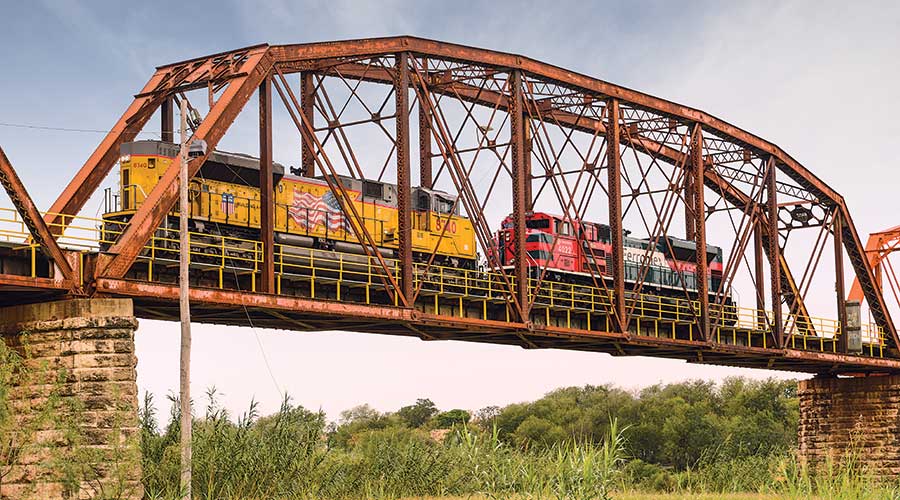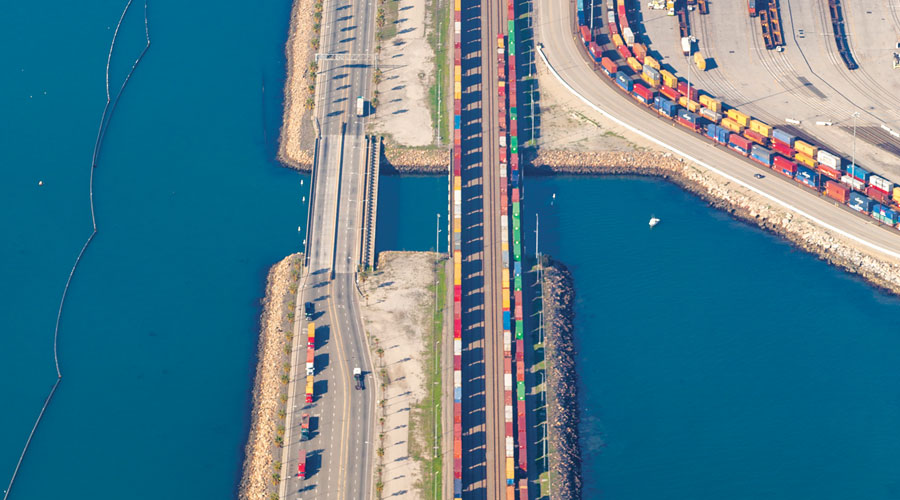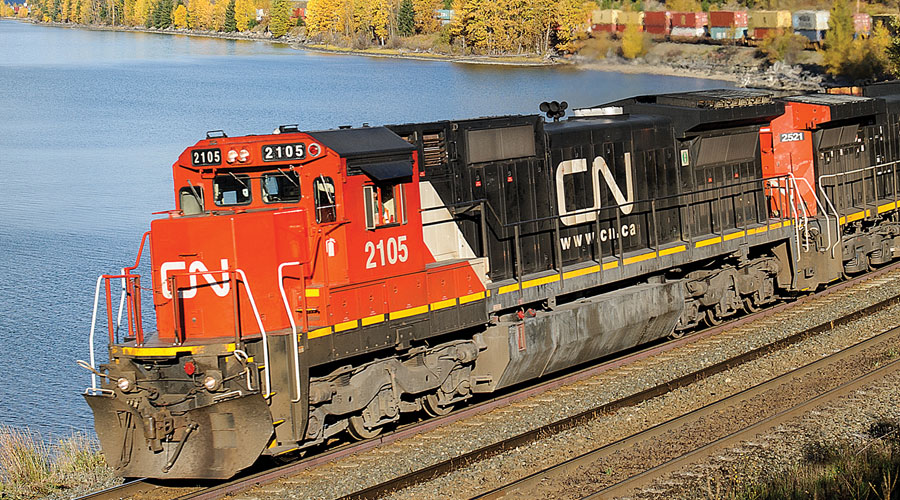Stay updated on news, articles and information for the rail industry
September 2007
Rail News: Intermodal
Norfolk Southern and Union Pacific: Streaking to the West
Union Pacific Railroad and Norfolk Southern Railway have reached Stage Two in their plan to provide a shorter domestic intermodal route between Los Angeles and points in the Southeast.
On Sept. 10, the Class Is expected to begin shifting westbound Atlanta-to-L.A. service from a Memphis, Tenn., gateway to a new Shreveport, La., gateway. The railroads plan to offer an “on-time or free” guarantee on BlueStreak SuperFlyer service between the Southeast and L.A.
New westbound service will feature a fourth-morning move from Atlanta; fifth-morning train from Charlotte, N.C., and Jacksonville, Fla.; and sixth-morning move from Miami.
BlueStreak trains heading West will use the Meridian Speedway, an NS/Kansas City Southern joint venture line between Shreveport and Meridian, Miss.
UP and NS launched faster eastbound BlueStreak service in May, and so far, trains have been running 99.9 percent on time, the railroads said.
Meanwhile, UP has begun to build-up intermodal terminal capacity in the West — literally. Last month, the Class I launched construction on a $90 million intermodal facility in Bexar County, Texas, near San Antonio.
Containers to follow trailers
Scheduled to open in late 2008, the San Antonio Intermodal Terminal initially will handle 100,000 trailers annually; eventually, the terminal will be expanded to process 250,000 trailers and containers each year.
The facility will feature computer systems designed to coordinate all rail-car, truck, trailer and container moves, and reduce the time a truck stops at the gate from the national average of four minutes to 30 or 45 seconds.
Trucks currently travel to Houston to drop off containers for rail moves because intermodal capacity is in short supply around San Antonio. 
| Ports pump up the volume
U.S. and Canadian railroads’ intermodal traffic remained down through 2007’s first 33 weeks, decreasing about 1 percent year-over-year to 9 million units, according to the Association of American Railroads. |
| North American intermodal volume drops for first time since 2002
Talk about tough comparisons. In the second quarter, North American rail intermodal volume totaled 3.53 million units — not exactly a minuscule amount given the sluggish U.S. economy. |
Keywords
Browse articles on intermodal BlueStreak Union Pacific Norfolk SouthernContact Progressive Railroading editorial staff.


 LRW Honors Amtrak’s Acheson As Railway Woman Of The Year
LRW Honors Amtrak’s Acheson As Railway Woman Of The Year
 From Editor-In-Chief Foran: Of Gender Equity And Inclusion
From Editor-In-Chief Foran: Of Gender Equity And Inclusion
 Spotlight On Some Of Today’s Rail Safety Products
Spotlight On Some Of Today’s Rail Safety Products
 Women of Influence in Rail eBook
Women of Influence in Rail eBook
 railPrime
railPrime






